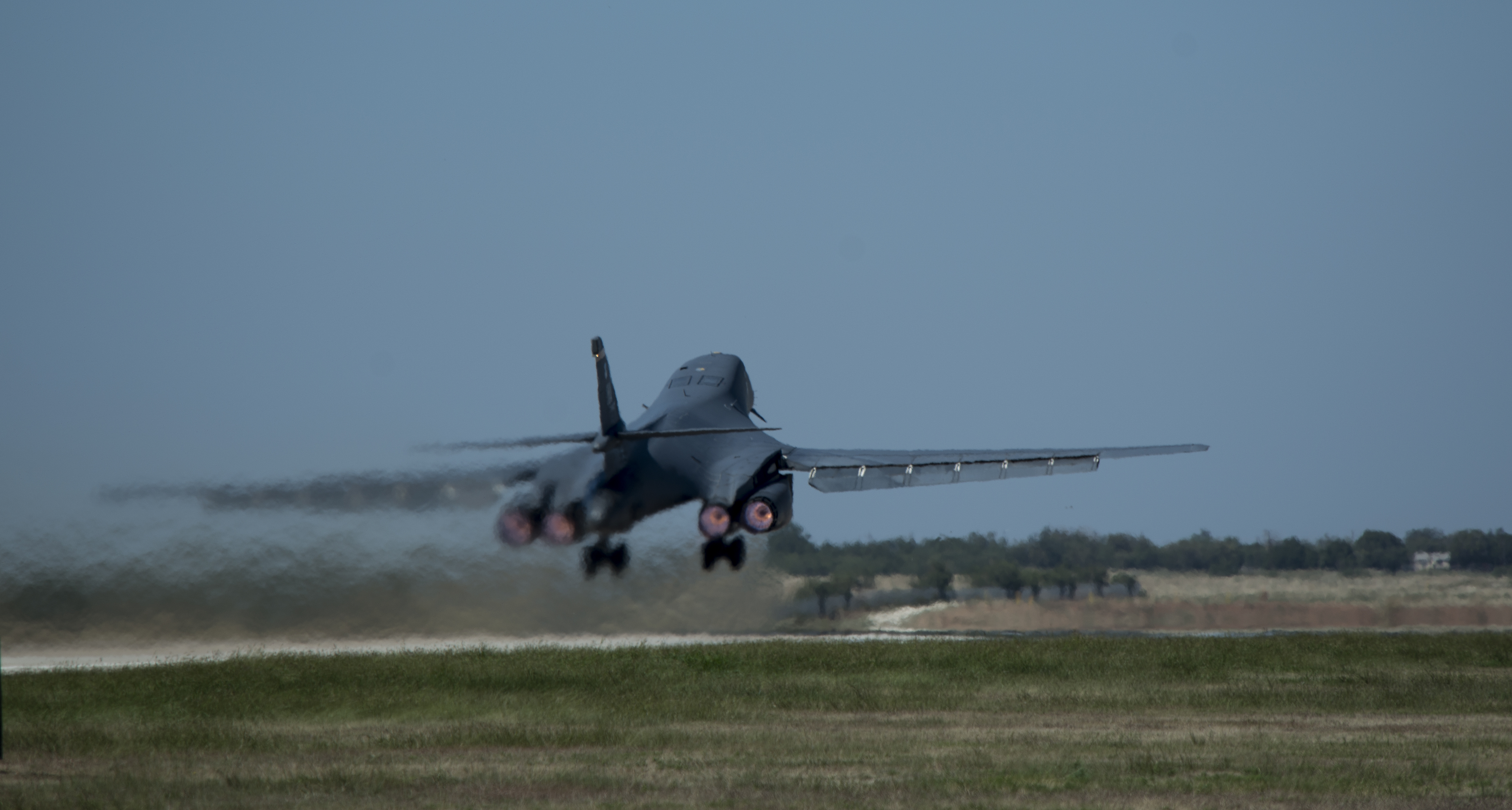
Two B-1B Lancers from the 7th Bomb Wing, Dyess Air Base, Texas, Air Force Global Strike Command, deployed to the U.S. European area of responsibility today to join the B-52 Stratofortress, which arrived Aug. 30 at RAF Fairford, United Kingdom.
All three aircraft will take part in Exercise Ample Strike 16, an annual Czech Republic-led exercise with 300 participants from 18 countries scheduled for Sept. 5-16.
During Ample Strike, the B-52, B-1Bs, and Airmen from 2nd Air Support Operations Squadron, Vilseck, Germany, will conduct day and nighttime operations to improve NATO and partner nation interoperability. The B-52 Stratofortress and one B-1B Lancer are then scheduled to participate in the Czech Republic-hosted NATO Air Days in Ostrava, Czech Republic, Sept. 13-19.
The B-52 Stratofortress and one B-1B Lancer are then scheduled to participate in the Czech Republic-hosted NATO Air Days in Ostrava, Czech Republic, Sept. 13-19.
The B-1B Lancer was developed by Rockwell International, now Boeing Defense And Space Group, and is the US Air Force long-range strategic bomber. The B-1B has the largest internal payload of any current bomber. The B-1B became operational in 1986. In July 2001, the US Department of Defense announced plans to cut its B-1B inventory from 92 to 67 as a cost-saving measure. The first aircraft was withdrawn from service in August 2002. Following Operation Iraqi Freedom, it was decided that there should be 67 aircraft in the fleet.
The remaining fleet operates from Dyess AFB, Texas (38 aircraft) and Ellsworth AFB, South Dakota (29 aircraft). The B-1B is expected to in be service until 2025. In May 2010, Boeing B-1 bomber has completed its 25th Anniversary of operations at Dyess US Air Force Base.